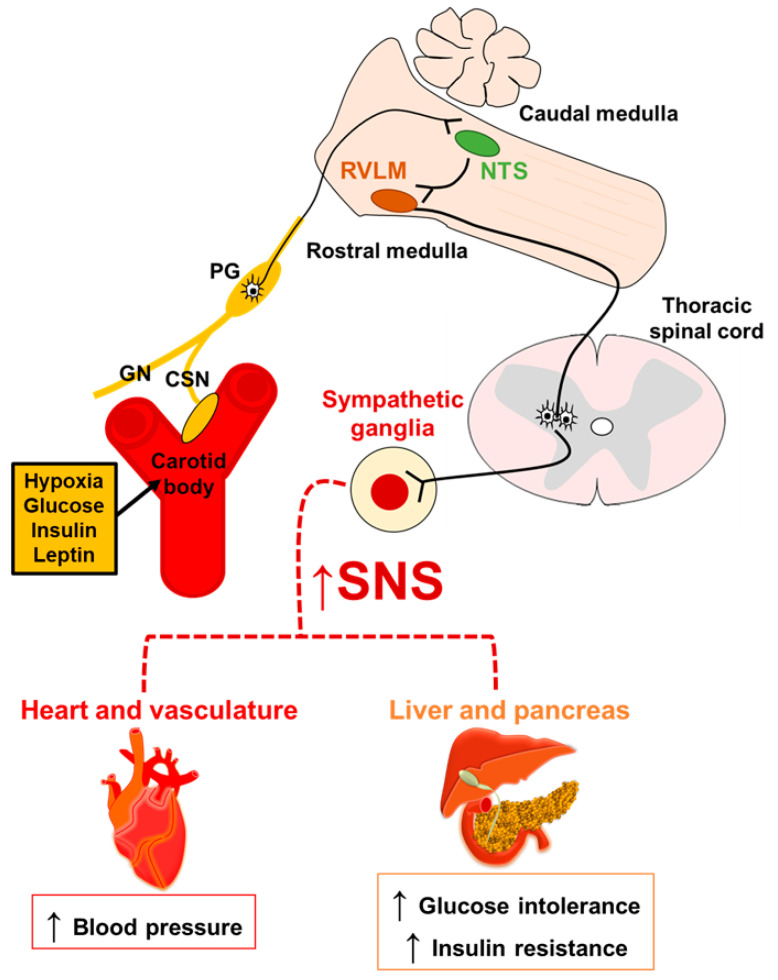Figure 1.
Mechanisms by which carotid body activation increases blood pressure and leads to metabolic abnormalities. Hypoxia, glucose, insulin and leptin activate the carotid body, which provides the afferent chemosensory input to the nucleus of the solitary tract (NTS) via the glossopharyngeal nerve (GN) subsequently activating neurons in the rostral ventrolateral medulla (RVLM) and sympathetic ganglia, eliciting cardiovascular and metabolic disturbances. CSN: carotid sinus nerve; PG: petrosal ganglia; SNS: sympathetic nervous system.

